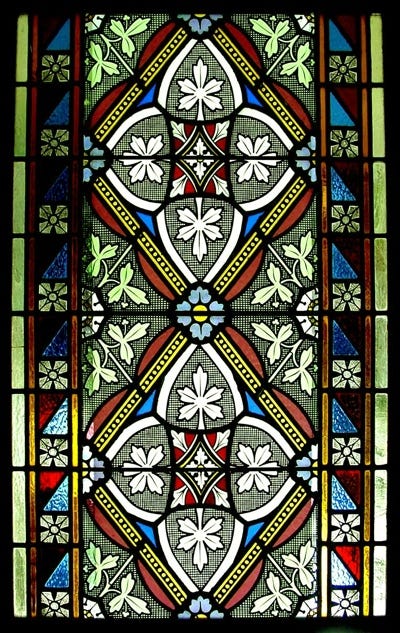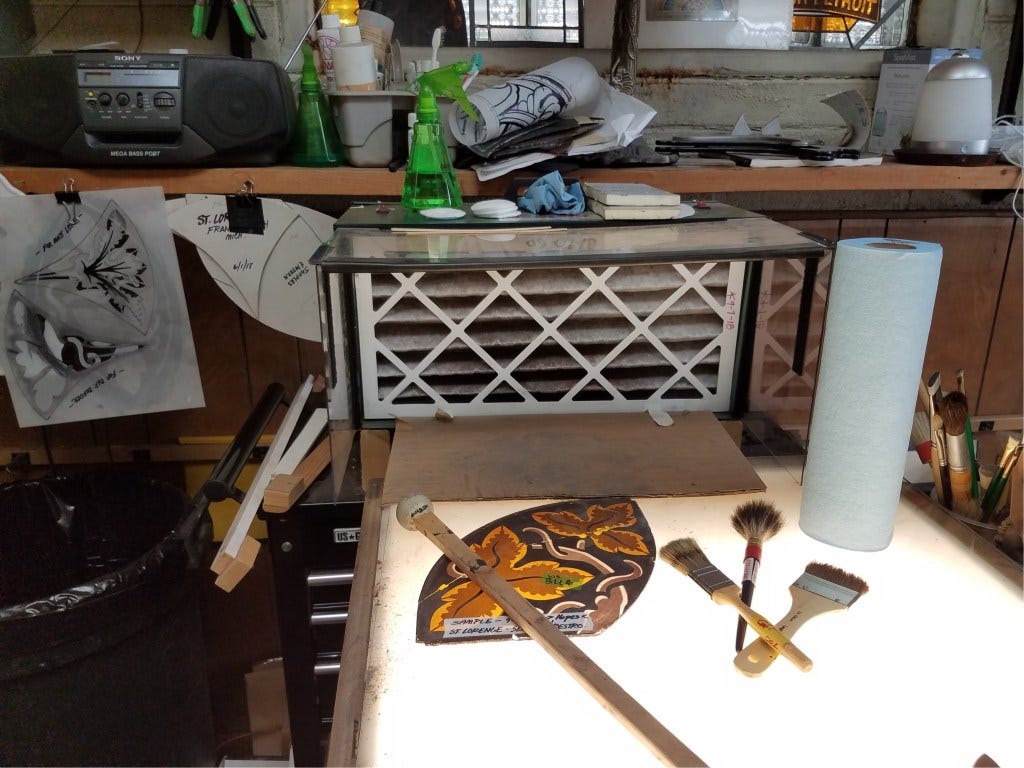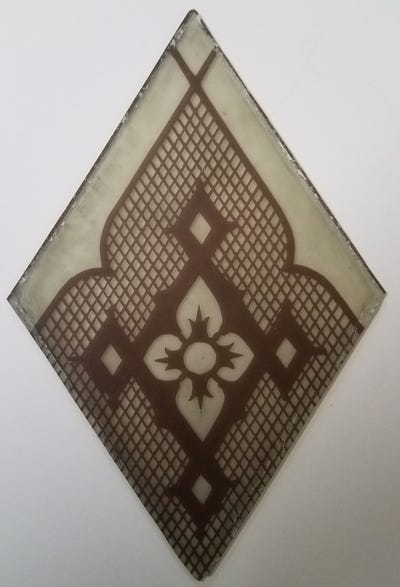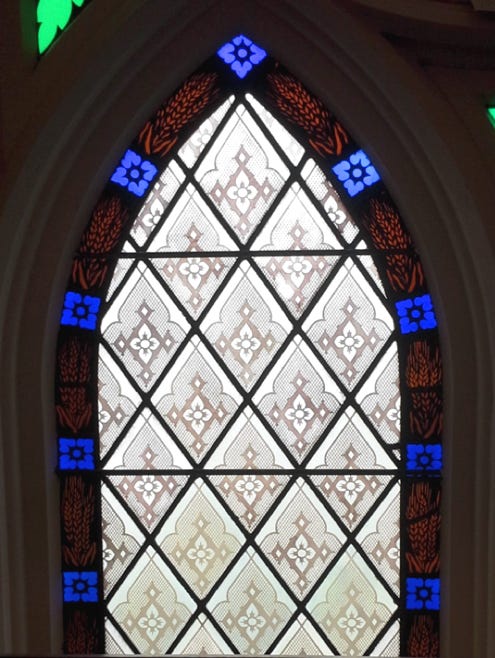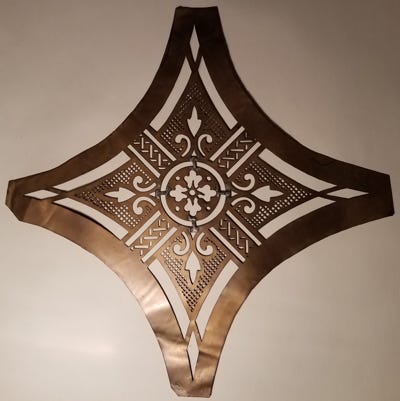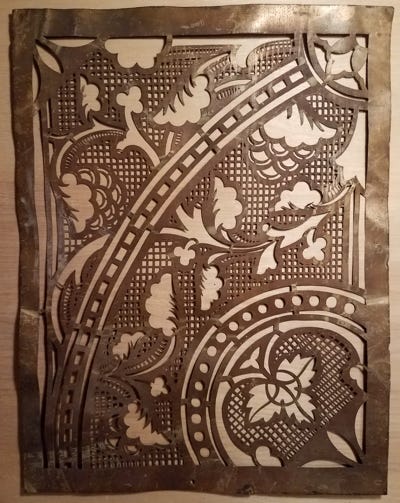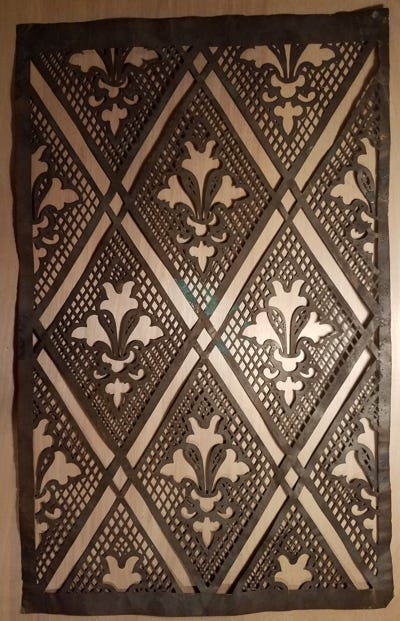Here's an email from a colleague - Tom - who lives and works in Michigan:
Hello Gentlemen,
Received your video on the stenciling technique and really liked it:
I do some stencilling in my own restoration and repair work.
And, fifty years ago, when an old local German studio closed their doors, I was able to rescue a lot of tools they left behind.
This studio had been in business here since 1861 - there was a big collection of old stencils:
These originals were mainly made of sheet brass.
Some had hinges attached to help with production.
There were a few stencils made from zinc.
And the most recent were made from heavy paper.
That was my introduction to the stencilling technique.
I've recently considered organising these stencils into an archive to make them more accessible.
You might ask, how many do you have? - I've never counted but there's a lot of them.
I've been able to roughly sort them by size and uses:
There are small rosette-type patterns.
And floral border/edge designs.
And also larger "field-styled" pieces.
I believe many of the brass and zinc sheets are acid-etched.
The other experience I gained from this early adventure was the technique itself: the whole building was unbelievable dirty with glass paint powder.
As your video shows, the stencil was placed on top of a dried layer of paint.
It was then brushed with a scrub to remove the paint exposed through the stencil.
So this is the opposite of the contemporary silkscreen technique where the paint is applied through the screen.
There was no ventilation system ... a casual stroll through the building would guarantee a nose-full of black dust.
I currently use a bench-top air filtration unit with a changeable filter: I can send you a photo of my set-up which show the need for this precaution.
If you're interested I can also share a few pictures of some of these ancient stencils, along with a few pieces of the glass created with them.
Thanks for your time. Keep sharing the knowledge. The rewards from sharing are every bit as good as successfully completing a stained glass project.
Regards,
Tom
Hello Tom,
We're always glad to hear from you.
And yes we’d love some photos - of your set-up and also of some stencils: would you be OK if we posted these, with your name, on the blog? - Your words are fascinating and will be very helpful to many people.
Best wishes always from us,
Stephen
Good morning, Stephen,
First, a picture of a stencilled window I collected from the old German studio. I do believe it was used for display and an example of their work:
Next, a picture of the bench-top air filter I use. It sits at the end of of my light table.
Note the colour of the once-white filter. That filter is regularly changed, depending on the amount of stencilling being done. You can actually see the dust being pulled into it ...
Here's a repair and restoration project that is about to be completed, starting with a single piece of the original stencilled glass:
Here's a matching stencil made with stencil paper:
Here's the completed window panel and border with all pieces painted and stencilled:
And here's an assortment of the old brass stencils:
Thanks for letting me share this piece of local history.
Tom
Tom - thank you. This is wonderful. Your story and photographs are so helpful to us and to our colleagues / readers across the world. Thank you.
Best wishes,
Stephen
For more about the undercoat, see here:






